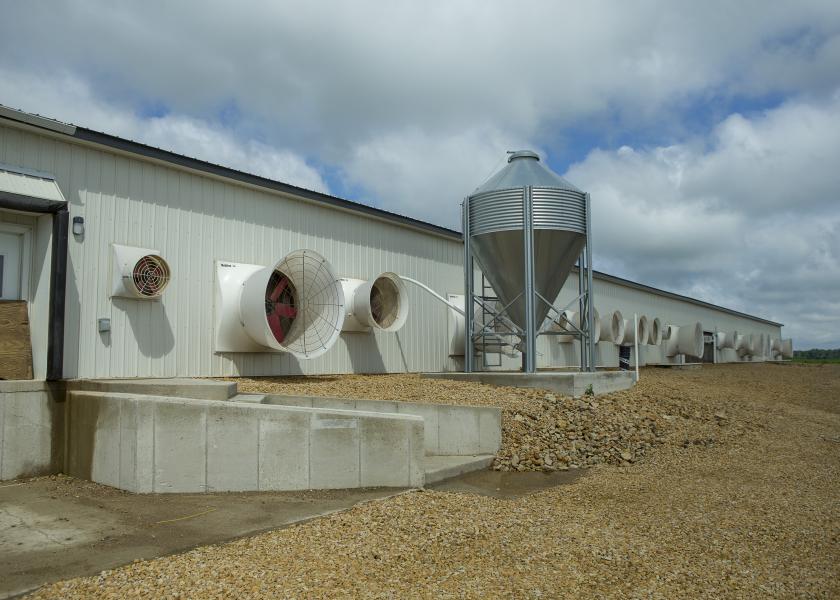Dry Fog with Common Disinfectants Decontaminates Supply Rooms

Hog producers discouraged to learn foggers don’t fully disinfect a supply room should not close the door on the biosecurity method yet. New research spearheaded by Erin Kettelkamp, DVM, with Swine Vet Center, found a better solution for disinfecting supplies in a hog facility.
“In previous research, all commercial foggers resulted in incomplete disinfectant contact to all sides of objects,” reported Kettelkamp, who earned her DVM from the University of Illinois. While at the university, she studied fogger decontamination efficacy and identified a new protocol for disinfection.
Particle Size, Disinfectants Studied
Kettelkamp’s research considered two questions. The first was how the aerosol particle size impacted fumigation. The second question was the composition of the disinfectant.
“First, particle size does matter and the smaller the better,” she said. “We used a dry fog that is a particle under 10 microns. A fine mist is 100 microns, so this is a particle you can’t quite see. But when you have them in a high frequency, it creates a dense fog, which is important because those small particles move through the room. Instead of bursting at the first surface they come into contact with, the particles permeate the room and achieve disinfection.”
For the second question, Kettelkamp tested a combination of hydrogen peroxide and peracetic acid, which is used in food processing, dairy and beverage industries for disinfection. After testing different concentrations of both, she found one that inactivated pathogens.
“There is a ready-to-use formula…but it wasn’t strong enough,” she said. “We increased our concentration by doubling our hydrogen peroxide and quadrupling our peracetic acid.”
She also tested using hydrogen peroxide alone at the high rate, but it was not effective. Disinfection depends on peracetic acid in the mixture, she added.
Kettelkamp used a geo-bacillus indicator strip with a robust bacterial pathogen colony to test the results. She validated the results with a porcine reproductive and respiratory syndrome (PRRS) modified live virus vaccine and manure. The dry fog inactivated the indicator strip and PRRS while also disinfecting the manure.
Dry Fog Best
“If a producer wants to continue to use a fogging chamber, I recommend working with a veterinarian on using a type of fogger to decrease the particle size,” Kettelkamp said. “Hurricane foggers can be adjusted to smaller particle sizes and will be more effective (than larger sizes).
“The gold standard is a dry fog for best permeation throughout the room,” she added. “Specifically in this model, the hydrogen peroxide and peracetic acid worked well.”
Another benefit to a dry-fog system is it only needs an air compressor for operation. And after treatment, clean-up is easy because dry fog produces no residue or liquid pools that need to be cleaned up.
Recommendations
Based on her research, Kettelkamp reports complete disinfection by aerosol decontamination occurs with droplet sizes less than 14 microns. Optimal results require a droplet size that’s less than 6 microns, also considered a dry fog.
In addition, the disinfectant concentrations for decontamination must be hydrogen peroxide levels above 4.2 ppm and peracetic acid levels at 0.13 ppm.
“Fogging certainly isn’t the only method to decontaminate items as they come into farms,” she added. “Other methods such as hand spraying items and time and temperature to let items decontaminate are also effective. Fogging could also be used with other methods to achieve a really robust decontamination.”
More from Farm Journal's PORK:
Will TADD Process Inactivate ASF Virus in Transport Trailers?
Forecasting Outbreaks Could Be a Game-Changer for Pork Industry
Ultraviolet Light: Don’t Be Misled by a False Sense of Security







